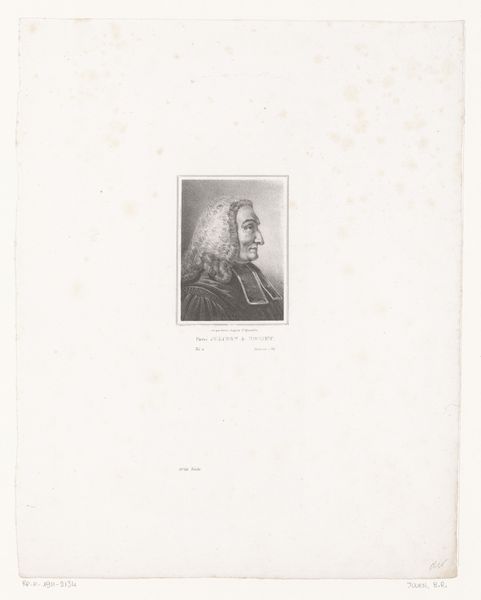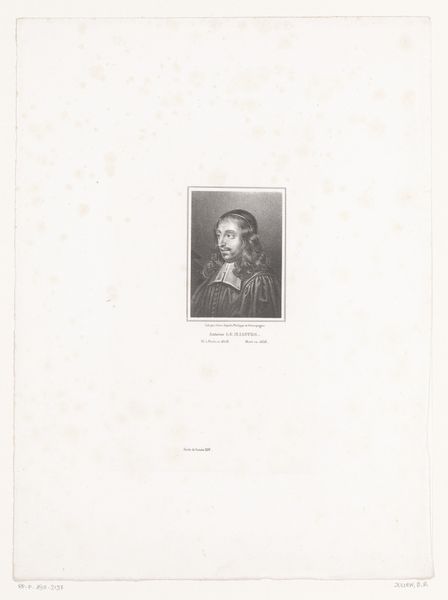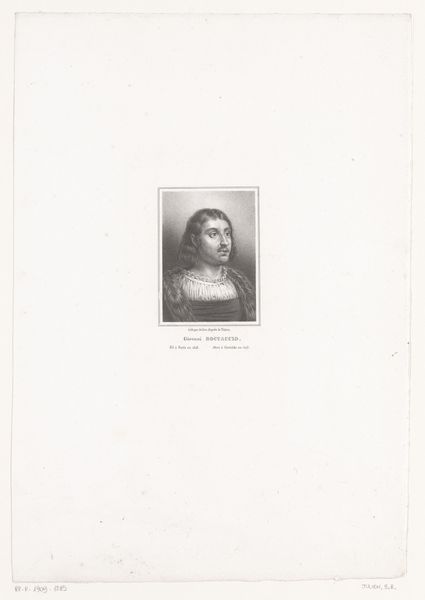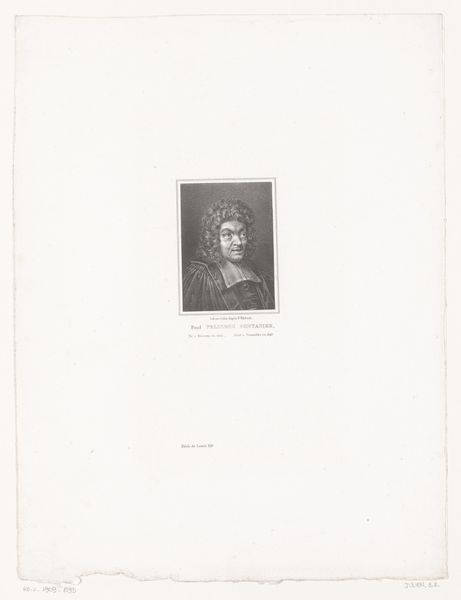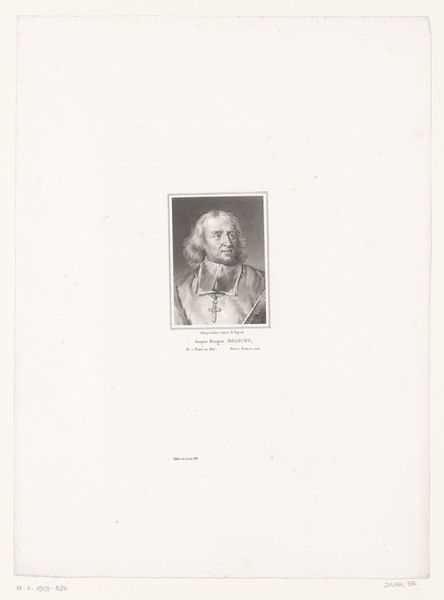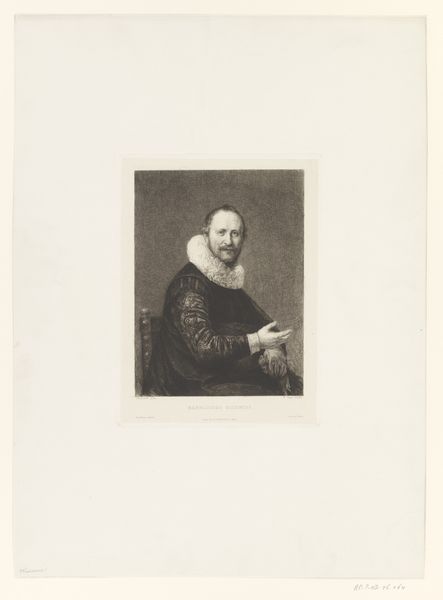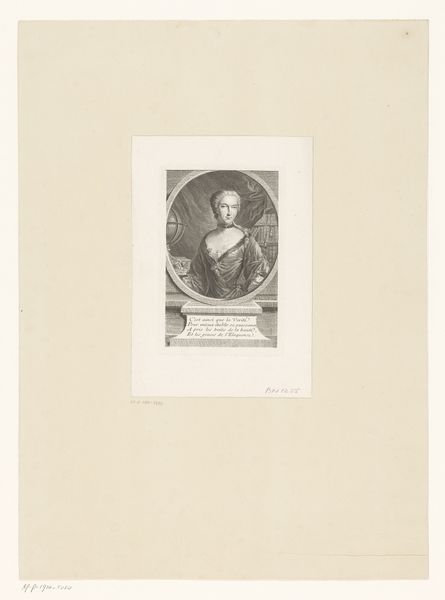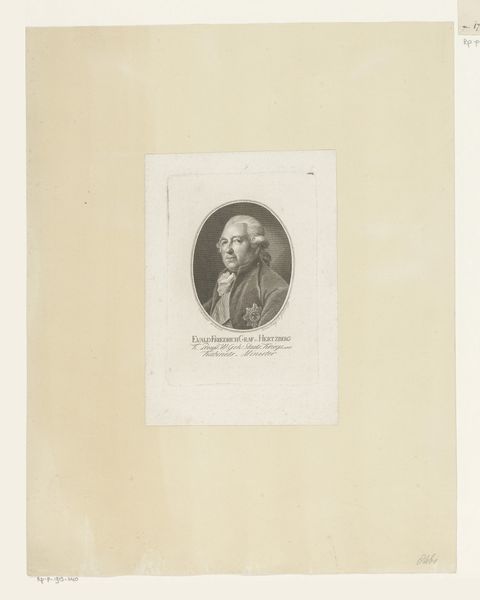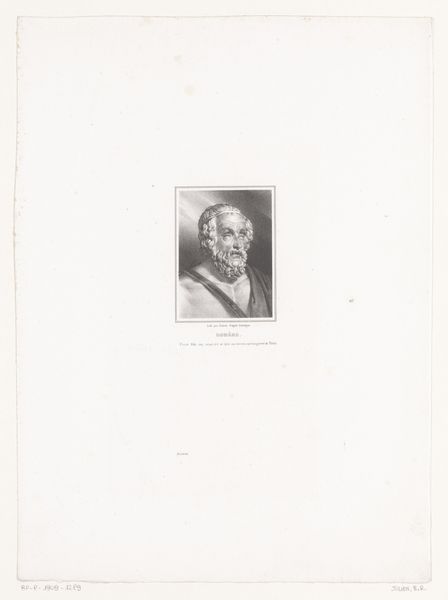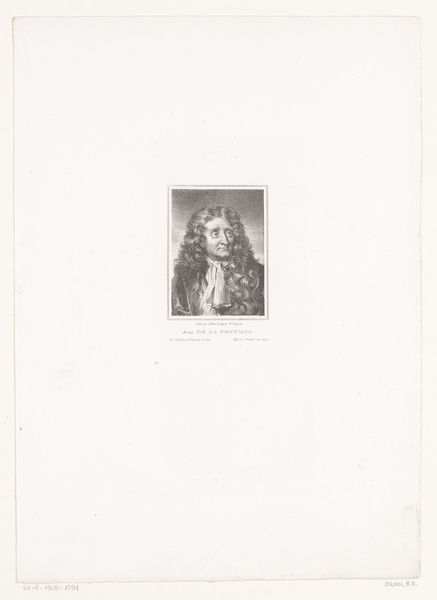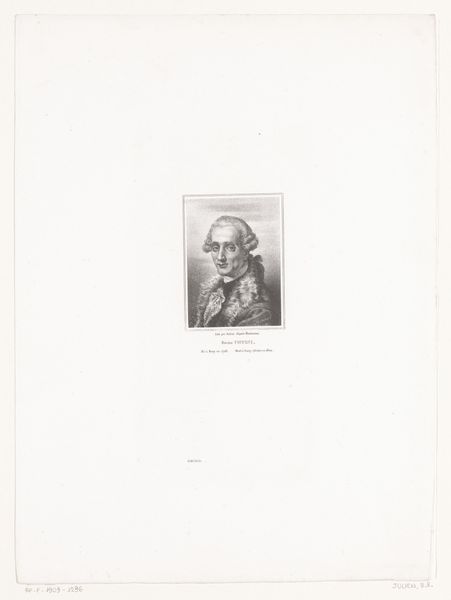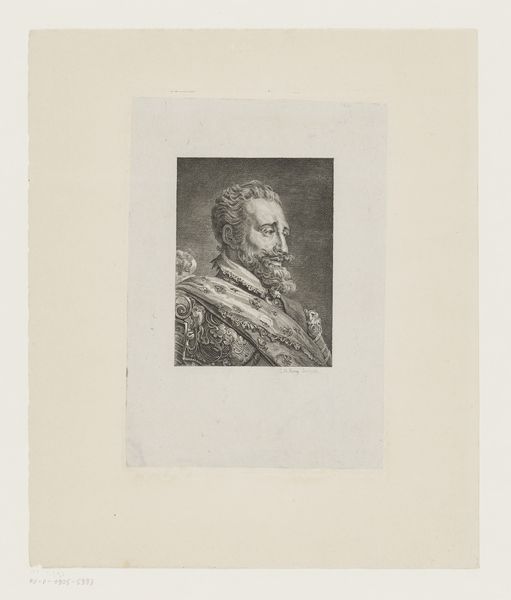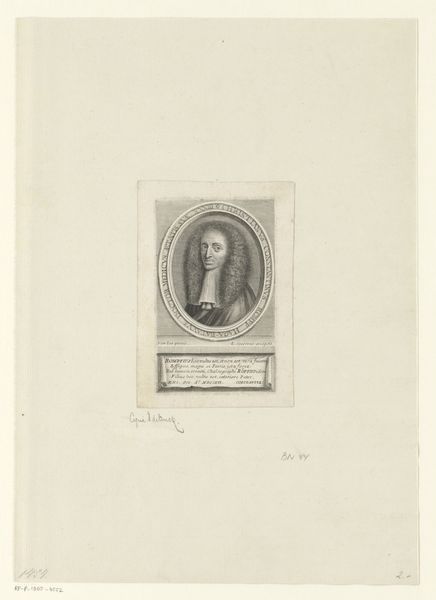
print, engraving
#
portrait
#
neoclacissism
# print
#
old engraving style
#
line
#
academic-art
#
engraving
Dimensions: height 335 mm, width 251 mm
Copyright: Rijks Museum: Open Domain
Bernard Romain Julien created this print of Gaius Plinius Secundus Maior, also known as Pliny the Elder, in the 19th century. This work reflects the enduring influence of classical antiquity on 19th-century European culture and the rise of Neoclassicism. Pliny, a Roman author, naturalist, and naval commander, became a symbol of knowledge and civic virtue during the Enlightenment, and in Julien's time, the desire to connect with the figures of the past reflected a broader cultural aspiration to emulate the perceived wisdom and grandeur of the Roman Empire. Prints like this served to disseminate images of historical figures, contributing to a shared visual culture that reinforced classical ideals. Art historians analyze such images not only for their aesthetic qualities but also for their role in shaping public perceptions of history and cultural identity. Detailed archival research into the print's production and reception would further illuminate its significance within its specific historical context.
Comments
No comments
Be the first to comment and join the conversation on the ultimate creative platform.
